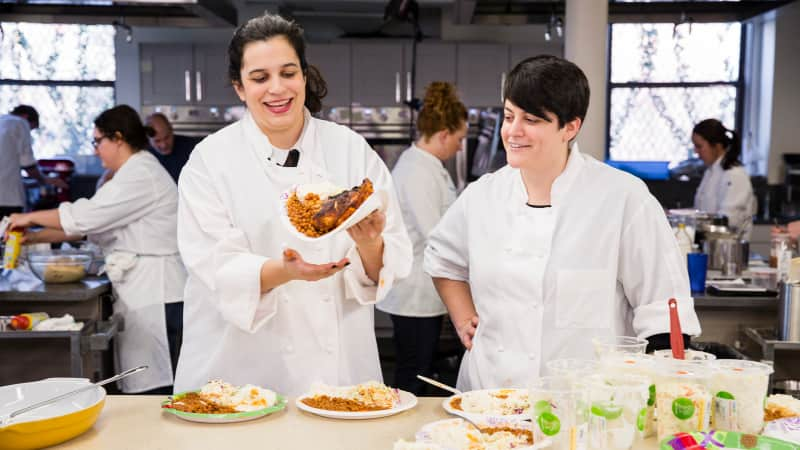The Best Paper Towels
Equipment Review
We tested eight nationally available, top-selling disposable plates made from a variety of materials.
Last Updated May 3, 2023. Appears in Cook's Country TV Season 11: Ballpark Classics

Our favorite disposable plates are now marketed under a different name. They are now called the Hefty ECOSAVE Compostable 10-1/8 inch Plates; the product itself has not changed.
Barbecue sauce drips over the edge of your plate and straight onto your neighbor’s shoes. Pizza grease soaks through onto your favorite party pants. A loaded picnic plate suddenly collapses. Most of us have fallen victim to a floppy, soggy disposable plate at one time or another. While disposable plates are a convenient choice for parties, barbecues, or nights when you simply don’t feel like doing the dishes, quality counts.
Our longtime favorite disposable plates by Vanity Fair were recently redesigned, so we decided to revisit the category. We stocked up on eight nationally available, top-selling products priced from roughly $0.10 to $0.55 per plate. Most of the plates we found come in multiple sizes; we opted for plates around 10 inches wide—roughly the size of a normal dinner plate.
We put these plates to the test by saddling them with more food than anyone would probably (hopefully) eat in one sitting—a full 2 pounds of picnic favorites including bone-in chicken breast, piping-hot baked beans, coleslaw, and potato salad. With a plastic fork in one hand and a loaded plate in the other, we walked a loop around the busy test kitchen to simulate mingling at a barbecue or party, occasionally poking a fork into the food as if we were eating. Half the plates buckled, sagged, or cracked from the get-go, either from the weight of the food or the stress of the fork. But things really took a nosedive when we repeated the test after letting food sit on the plates for 5 minutes: Some plates practically bent in half as we held them, sending baked beans and coleslaw sliding toward the floor. Only a handful of plates held strong, maintaining their rigid, flat surface.
The plates that performed best in this test appeared to have thicker bottoms than the floppier, lower-ranked plates, so we cut the plates in half and used calipers to measure the thickness of each product’s eating surface. Top-ranked plates were more than twice as thick as poor-performing products—0.7 millimeter compared to 0.3 millimeter—which explained why these plates held steady while others flopped. A thicker bottom also helped prevent grease and liquid from soaking through onto our clothes. We observed as much when we let each plate sit loaded with pepperoni pizza for 10 minutes: The undersides of the thinnest plates were saturated with grease, while top performers still looked as good as new.
But a thicker plate wasn’t always better. Two of the thickest and sturdiest plates tore and melted when we cut chicken or reheated pizza in the microwave on them. Both were made from polystyrene, a plastic that can be either hard or flexible. The flexible polystyrene plate was...

The mission of America’s Test Kitchen Reviews is to find the best equipment and ingredients for the home cook through rigorous, hands-on testing. We stand behind our winners so much that we even put our seal of approval on them.

This is a members' feature.